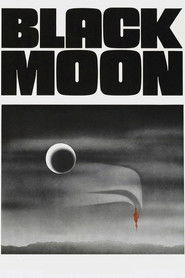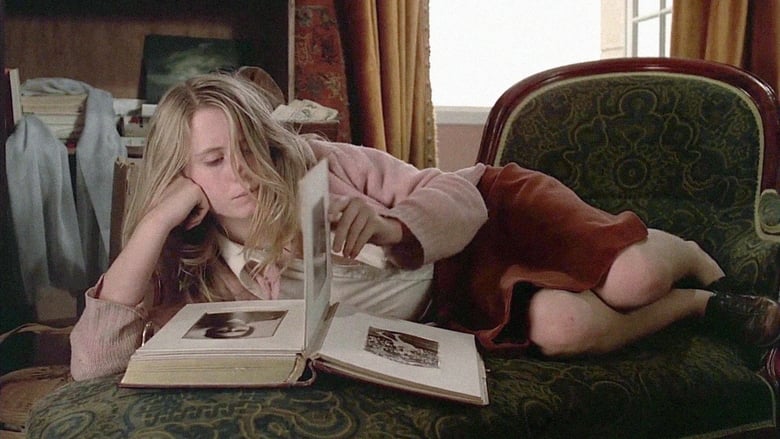“Black Moon 1975” is a surreal, dream-like film that follows a young woman who wanders through a strange and unsettling world. She encounters talking animals, disfigured humans, and a group of women living in an isolated mansion. The film explores themes of identity, sexuality, and societal norms through bizarre and symbolic imagery. It is a haunting and enigmatic journey with no clear answers or resolutions.

⇣⇣⇣
Review
In the world of film, few names are as synonymous with literary prowess as Ernest Hemingway. This master storyteller weaved intricate tales of life, love, and loss with a skill that inspired new generations of writers and filmmakers alike. With this in mind, it’s no wonder that Hemingway fans are eagerly anticipating the release of “Black Moon,” a new movie based on one of his lesser-known works.
First published in 1926, “Black Moon” tells the story of a group of soldiers navigating the treacherous waters of war-torn Europe. The protagonist, David Bourne, is a talented writer haunted by his past experiences and struggling to find meaning in a world that seems to have lost its way. As he and his fellow soldiers face danger and heartbreak on the battlefield, they must also grapple with complex relationships and deep-seated emotions that threaten to tear them apart.
At its heart, “Black Moon” is a meditation on the human condition. Hemingway’s masterful prose captures the complexities of war with unflinching realism, depicting both the physical horror and emotional toll that conflict can take on individuals and societies alike. The characters are deeply flawed yet sympathetic, struggling to cope with their own demons even as they fight for something larger than themselves.
But what makes “Black Moon” truly remarkable is its ability to transcend its historical setting. While it is undoubtedly rooted in the turmoil of post-World War I Europe, its themes resonate just as strongly today as they did almost a century ago. As director Martin McDonagh has noted in interviews leading up to the film’s release, “Black Moon” offers a timely reminder of the destructive power of nationalism and xenophobia – forces that continue to shape our world today.
Of course, an engaging storyline is only one piece of the puzzle when it comes to making a truly great film. Luckily for fans of both Hemingway and the cinematic arts, “Black Moon” boasts an impressive cast of actors and a talented crew.
At the heart of the film is actor Ralph Fiennes, who gives a powerful performance as David Bourne. Fiennes, best known for his roles in “Schindler’s List” and the “Harry Potter” franchise, has long been praised for his ability to convey complex emotions with remarkable subtlety. In “Black Moon,” he brings that same skill to bear, imbuing Bourne with a vulnerability and depth that makes him both compelling and relatable.
But Fiennes is not alone in his standout performance. Supporting actors Tilda Swinton, Matthias Schoenaerts, and Gugu Mbatha-Raw all give nuanced portrayals of their respective characters, adding depth and texture to the already rich tapestry of Hemingway’s narrative.
Behind the camera, director McDonagh also proves himself a master of his craft. Known for films such as “In Bruges” and “Three Billboards Outside Ebbing, Missouri,” McDonagh brings a keen eye for detail and an unerring sense of pacing to “Black Moon.” The result is a movie that manages to be both introspective and action-packed, drawing viewers in with its strong characters while never losing sight of its larger themes.
Beyond just its narrative strengths, however, “Black Moon” also boasts impressive technical achievements. The cinematography is stunningly beautiful, capturing both the landscape of wartime Europe as well as the intimate emotional moments between characters. Meanwhile, the score – composed by frequent McDonagh collaborator Carter Burwell – adds subtle yet impactful depth to each scene.
As is so often the case when it comes to adapting literary works for the big screen, there will undoubtedly be some criticisms leveled at “Black Moon.” Some may argue that it doesn’t capture all of the nuances or complexities of Hemingway’s prose; others may feel that certain characters were underdeveloped or that certain scenes could have been handled differently.
But for the most part, “Black Moon” is receiving rave reviews from critics and audiences alike. Its emotional depth, masterful performances, and timely themes have resonated with viewers across the world, leaving them both moved and inspired.
As we continue to grapple with the challenges of war, nationalism, and emotional turmoil in our own lives, it seems that “Black Moon” may be just the film we need to help us make sense of it all. Hemingway’s timeless message – that even in our darkest moments there is still hope for redemption – has never felt more relevant or more necessary.
Technical Data

- Runtime : 101
- Release : 1975-09-24
- Genre : Fantasy, Horror, Mystery, Science Fiction
- Cast : Cathryn Harrison as Lily, Therese Giehse as Old Lady (as Thérèse Giehse), Alexandra Stewart as Sister Lily, Joe Dallesandro as Brother Lily
- Crew : Jacques Maumont as Sound Mixer, Suzanne Baron as Editor, Sven Nykvist as Director of Photography, Louis Malle as Director, Louis Malle as Writer
- Popularity 7.593
- Budget : 0
- Revenue : 0
- Company : Neue Bioskop Film, Nouvelles Éditions de Films (NEF)
- Summary : There is a war in the world between the men and the women. A young girl tries to escape this reality and comes to a hidden place where a strange unicorn lives with a family: sister, brother, many children and an old woman that never leaves her bed but stays in contact with the world through her radio.
- Tagline : An apocalyptic Alice in Wonderland!
